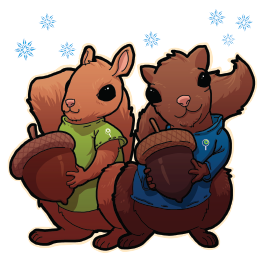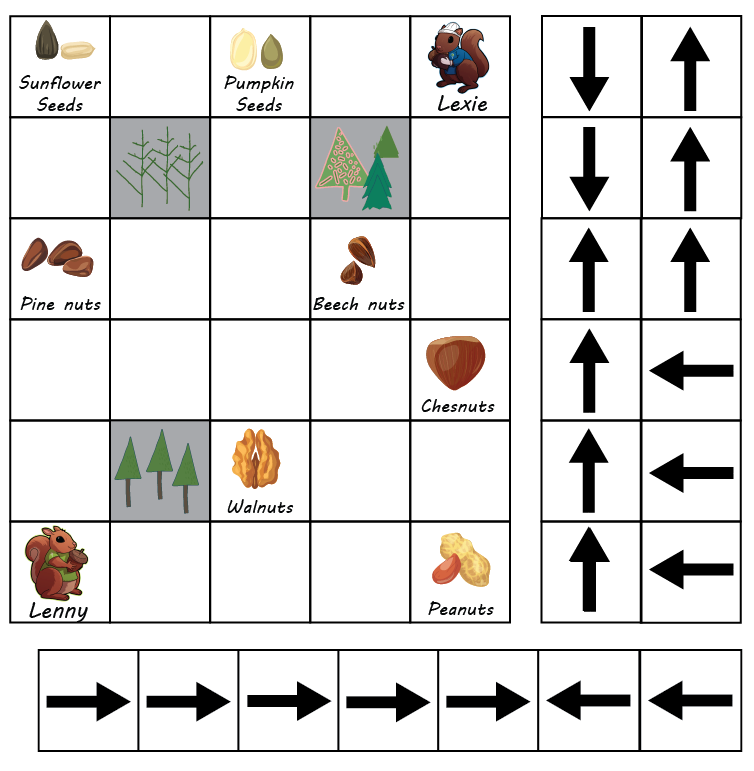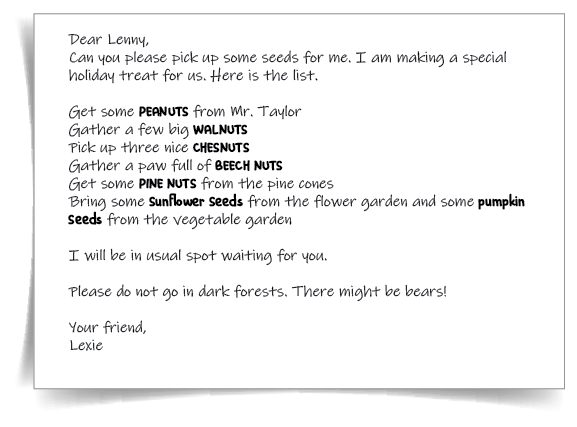Lexie’s Holiday Wish List

Lenny and Lexie (©Let’s Talk Science)

Lenny and Lexie (©Let’s Talk Science)
How does this align with my curriculum?
Try this fun board game that develops your unplugged coding skills.
Get ready to fuel your unplugged coding skills!
Looking for a way to have your child try some fun coding this holiday season? In this "unplugged" coding activity, your child will create a set of instructions so Lenny the squirrel can find nuts to give to his friend Lexie - and you will be Lenny!
When people create a sequence of instructions, they are creating an algorithm. Computer programmers develop algorithms just like this to tell computers what to do. Lexie's Holiday Wish List is a 30-minute game where your child develops their pattern recognition and algorithmic thinking skills while having a blast!
These skills will also play an important role in your child's education and future career. That's why it's never too early to get kids interested in coding!
Setting: Indoors
Time: 30 minutes
Concepts: Sequences, inputs & outputs
Skills: Pattern recognition, algorithmic thinking, debugging
Ages: 5+
Materials:
- Lenny & Lexie’s Grid Map
- Lexie’s Wish List and Directional Commands.
- 1 small figurine or button or building block (use your imagination) to represent Lenny
- Paper or a notebook for writing
- Pencil and eraser
What to do!
Image - Text Version
Shown is a black and white drawing of a list of text on a white sheet of paper. The list includes the following text:
Dear Lenny,
Can you please pick up some seeds for me. I am making a special holiday treat for us. Here is the list.
Get some PEANUTS from Mr. Taylor
Gather a few big WALNUTS
Pick up three nice CHESNUTS
Gather a paw full of BEECH NUTS
Get some PINE NUTS from the pine cones
Bring some Sunflower Seeds from the flower garden and some pumpkin Seeds from the vegetable garden
I will be in usual spot waiting for you.
Please do not go in dark forests. There might be bears!
Your friend,
Lexie
Image - Text Version
Shown is a colour illustration indicating how to indicate directions with arrows.
At the top is a black arrow pointing to the right. Below this is the text "Turn right". Beside this is a black arrow pointing to the left. Below this is the text "Turn left". Below these are two more arrows. On the left is a black arrow pointing downwards. Below this is the text "Go down". To the right of this is a black arrow pointing upwards. Below this is the text "Go up". At the bottom of the illustration is a chart that is one row high and five columns wide. In the first cell is an illustration of Lenny, a pale brown squirrel wearing a green shirt and holding an acorn in its paws. Below this is the text "Lenny". In each of the three adjacent cells is a black arrow pointing to the right. In the fifth cell is an illustration of a shelled peanut and a peanut in its shell. Below this is the text "Peanuts".
The fun doesn’t have to stop here! Join Lexie for more adventures as she hosts the STEM at Home newsletter and get free entertaining, illuminating, and educational resources to help your child soar.
Delivered directly to your inbox twice a month.
Learn More
Even though you were only using paper, you were writing code! When you create a set of instructions, such as which way to get from place to place, you are creating an algorithm. Computers use algorithms to do many different things. By giving instructions in chunks, such as “turn right” and “go forward”, you are giving instructions in blocks. This is why writing code this way is also called block-coding.
Block programming is a great way to begin to learn how to create algorithms that computers can understand. Once you know the basics of block-coding you can go on to learn more complicated types of coding.
There are several free websites where you can do more with block-coding. Have you tried Scratch™or Blockly Games™ or Edu-blocks™ in school or at home?
What’s Happening?
Even though you were only using paper, you were writing code! When you create a set of instructions, such as which way to get from place to place, you are creating an algorithm. Computers use algorithms to do many different things. By giving instructions in chunks, such as “turn right” and “go forward”, you are giving instructions in blocks. This is why writing code this way is also called block-coding.
Why does it matter?
Block programming is a great way to begin to learn how to create algorithms that computers can understand. Once you know the basics of block-coding you can go on to learn more complicated types of coding.
Investigate further!
There are several free websites where you can do more with block-coding. Have you tried Scratch™or Blockly Games™ or Edu-blocks™ in school or at home?


